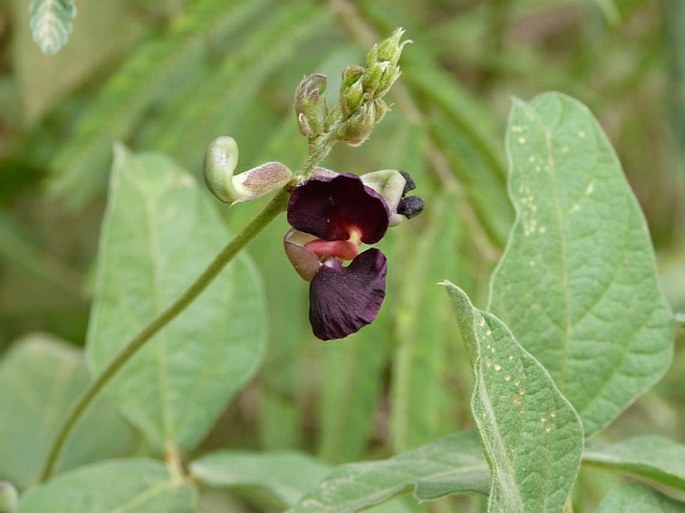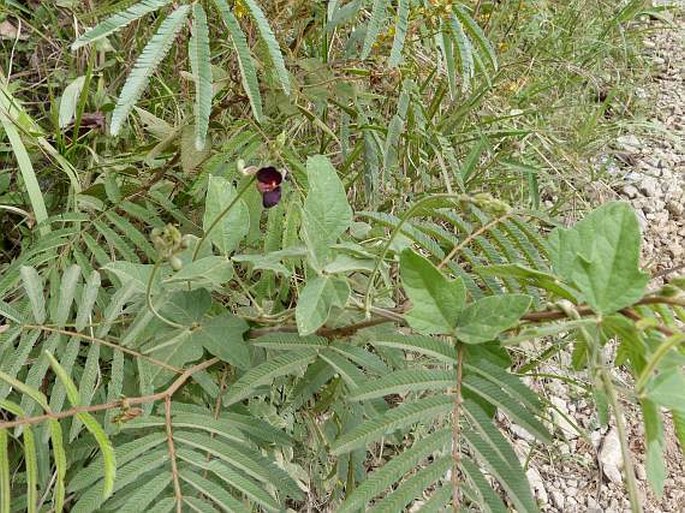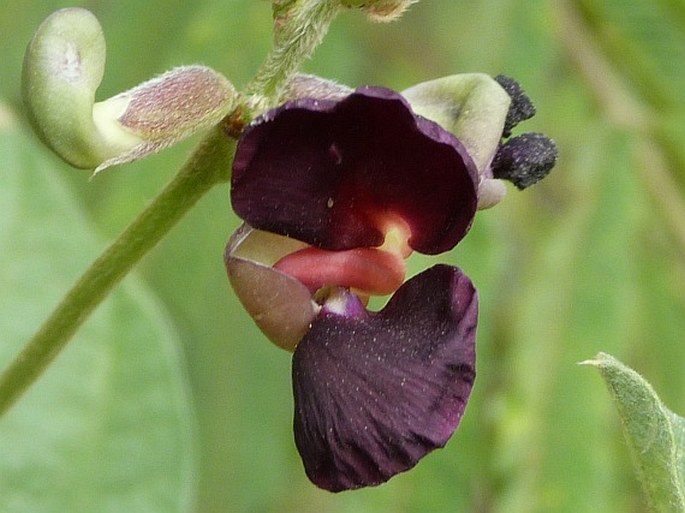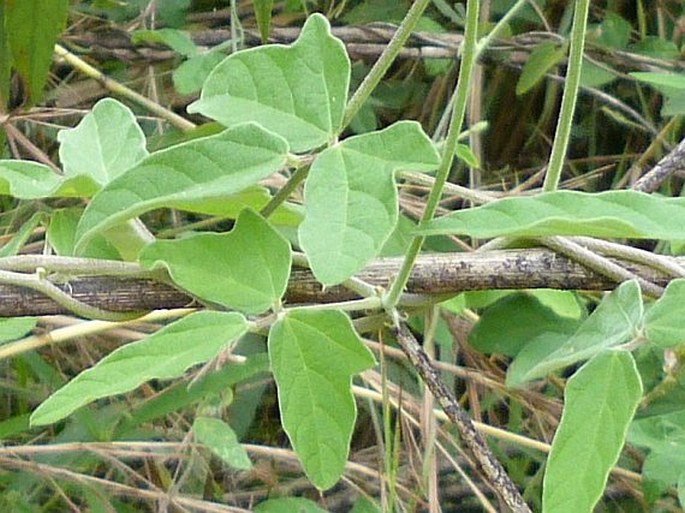Syn.: Phaseolus atropurpureus DC., Phaseolus semierectus var. atropurpureus (Moc. et Sessé ex DC.) M. Gómez
Family: Fabaceae Lindl.

Distribution: The American species – from southern Texas and Mexico through Cuba and Guatemala to northern part of South America. Widely cultivated and naturalised throughout tropics and subtropics, e.g. Brazil, Madagascar, southern China, Taiwan, Australia, Hawaii, etc.
Ecology: It grows in pine-oak forests and dry forests, at elevations up to 1200 m asl. Blooms all year long.

Description: Perennial prostrate vine with pilose stems. Leaves trifoliolate, leaflets 2–7 × 1.5–5 cm, softly tomentose on both sides, margins sparsely to densely ciliate, lateral leaflets ovate to narrowly elliptical, obtuse, mostly with one or two, shallow to deep lobes on the outer margin, terminal leaflet rhomboid, with or without single lobe either side. Inflorescences to 30 cm long, peduncle short pilose; bracts and bracteoles narrowly ovate, acute, 1–1.5 mm long; pedicels 1–2 mm long, puberulent; calyx tubular campanulate, densely pilose, the tube 4 mm long, the teeth lanceolate, about 2 mm long, subequal; wings longer than the standard and the keel, deep red to black purple, standard obovate, reflexed, yellow-green with a purple tint, keel pink. Fruit is a legume, 7–10 cm long, 2–4 mm wide, appressed pilose.
Use: This species is used for forage.
Note: The genus Macroptilium includes about 20 species, which occur in tropical America.






These images were taken in Guatemala, Lanquin (by Jindřiška Vančurová, February 11, 2015), and in Belize, Mountain Pine Ridge Forest Reserve (February 19, 2015).


